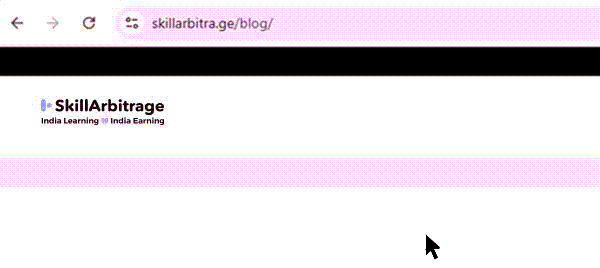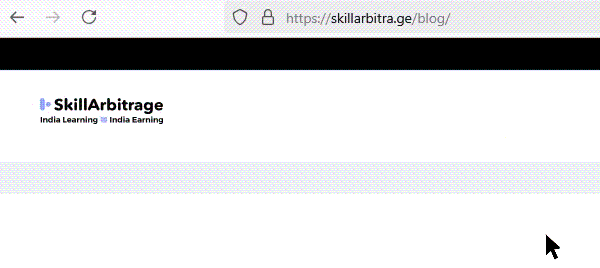This blog takes a close look at Fogg’s behavior model (FBM) and how it can be a governing principle for writing marketing content that prompts quick action. This would be an excellent resource for content writers, marketers, and strategists who want to use this failsafe formula for fantastic copy.
Table of Contents
Introduction
“Why doesn’t it work?”
This plaintive wail often haunts the long corridors of advertising and digital agencies.
After spending hours and days devising and implementing marketing campaigns with stunning visuals, clever copy, and a hefty ad budget, the results are often only lukewarm, if that.
There is a period of strange and deafening silence, and then everyone scurries to put together pointers to tell the clients why it doesn’t work and justify the hefty ad budget.
Marketing is a lot like an iceberg. The creative or copy we see is the tip of the iceberg. The maximum part of it is rooted in the submerged part of the human psyche, the unseen laws that govern our behavior.
This is where behavioral psychology comes into play, specifically Fogg’s Behavior Model (FBM).
When used in marketing strategy, it can ensure that conversions happen, sales take place, and it works.
What is Fogg’s Behavior Model?
Developed by Dr. BJ Fogg, a behavioral scientist at Stanford University, FBM is a framework that explains why people take action—or don’t.
It is simplicity exemplified. The model states that Behavior (B) happens when Motivation (M), Ability (A), and a Prompt (P) converge at the same moment.

If you miss any one of these, then your audience won’t take action. Miss one, and your audience won’t budge.
For marketers, this model is a goldmine. In any segment of marketing, whether you want sales, sign-ups, or shares, FBM offers a blueprint for crafting content that doesn’t just capture attention—it compels action.
In the subsequent sections, we will talk about ‘the how’ in detail and give you real-world case studies of instances where it did work. I will also show you how you can implement it in your creative copy.
Ready?
Let’s get started.
Understanding Fogg’s Behavior Model
Fogg’s Behavior Model, introduced by Dr. BJ Fogg in 2007, is a cornerstone of behavior design.
As we explained in the earlier section, the theory posits that for any behavior to occur, for example, clicking a “Buy Now” button —three elements must align:
- Motivation (the desire to act),
- Ability (the ease of acting), and
- a Prompt (the cue to act).
The formula that represents the model is B = MAP, and the model’s elegance lies in its clarity: if any piece is missing, the behavior fails.
This is especially valuable for marketers because there are a lot of ways to gain or retain leads, but no failsafe method to drive sales or ensure that the leads you gained after burning so much money, effort, and energy would actually convert.
Unless you are using the FMB (Fogg’s Behavior Model).
Unlike complex psychological theories, FBM distills behavior into actionable components, making it a favorite among designers, app developers, and—crucially—marketers.
Why does this matter for marketing?
Marketing is all about changing someone’s behavior, influencing them to do something like buy, subscribe, or engage that they wouldn’t have done without the marketing impetus.
Traditional models like AIDA (Attention, Interest, Desire, Action) focus on the customer journey, but FBM zooms in on the moment of action. It’s less about funnel stages and more about the psychological triggers that make someone say “yes” right now.
For instance, a prospect might be interested in your product (Desire in AIDA), but if the checkout process is confusing (low Ability in FBM), they won’t convert.
FBM gives marketers a lens to diagnose and fix these gaps.
Anatomy of the formula: breaking down the components
To wield FBM effectively, let’s dissect its three pillars: Motivation, Ability, and Prompts. Each of them plays a distinct role in shaping buying behavior.
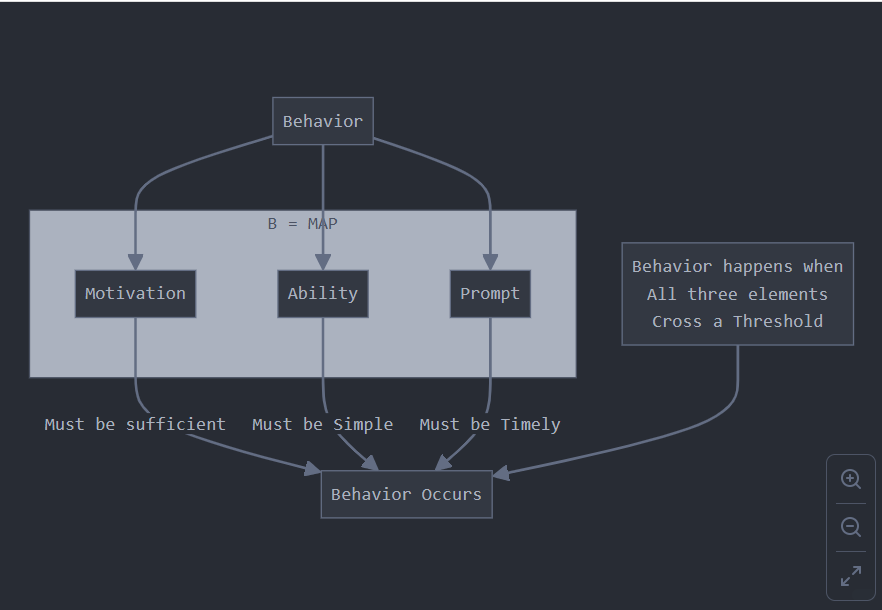
Mastering this one formula can revolutionize your marketing content.
So, what are the three steps, and what do they mean?
Motivation
Motivation is the fuel that drives action. According to Fogg, there are three core motivators, with two sides each:
- Pleasure/Pain: Immediate responses like enjoying a reward or avoiding discomfort.
- Hope/Fear: Anticipation of future outcomes, such as gaining success or dodging failure.
- Acceptance/Rejection: Social drivers, like fitting in or avoiding exclusion.

In marketing, tapping into these motivators is key to driving action.
Emotional storytelling can spark pleasure.
Think of a real estate ad where a happy family is shown to sell a 4 BHK worth millions. We show a happy life and a lifestyle to sell a brick-and-mortar structure.
Or think about fear, it is an equally powerful motivator. This is what we play upon when crafting urgency-driven copy like “Hurry! Only a few seats left!” or “Only 3 left in stock!”.
Copies like this leverage the fear of missing out, or FOMO, to boost motivation.
The trick is aligning your message with what your audience already cares about. Motivation cannot be forced if it does not exist.
Think of it this way: you are urging a child to eat an orange.
You could say:
“Eating an orange would boost your energy levels, and you would do great in sports”. (Hope)
“Eating a juicy orange in the morning will make your mornings awesome”. (Pleasure)
“If you don’t eat an orange, you can’t be great at sports”. (Pain)
“If you don’t have an orange now, then there won’t be any oranges left”. (Fear)
You could say any of these things, but nothing will work if the child hates oranges! There has to be some motivation in him to begin with, at least a latent desire to have the orange.
This is what we mean when we say there has to be some motivation to begin with. Interestingly, this is why high-quality leads are important because they do have the motivation; all it needs is a proper strategy to highlight that motivation for them to take action.
Ability
Ability is about making the desired action easy.
Fogg highlights six “simplicity factors” that affect it.
These are: time, money, physical effort, mental effort, social deviance, and routine.
These factors can be further broken into some specific points.



If any of the points given above are too high, your audience won’t act, no matter how motivated they are.
Let’s go back to the child and orange analogy.
The child will refuse the orange if:
- it is too pricey for him to taste it
- it takes a long time for him to have it
- it is too laborious or takes too much effort on his part to consume it
- it is something he sees as a taboo or something “not done socially” and,
- he has never seen anybody have and enjoy an orange before.
For marketers, this means reducing friction. A lengthy marketing funnel or very complex and riddle-like copy kills this very important factor- Ability- by demanding too much time and mental effort.
On the other hand, a one-click purchase (like Amazon’s “Buy Now”) maximizes it.
Make the path to “yes” as smooth as possible.
Prompts
Prompts are the last and final step to ignite action. Without a cue, even high motivation and ability won’t lead to behavior.
Fogg categorizes prompts into three types:
- Sparks: Boost motivation when ability is high (e.g., “Join 10,000 happy customers!”).
- Facilitators: Enhance ability when motivation is high (e.g., “Sign up in 30 seconds”).
- Signals: Simple reminders when both are high (e.g., “Add to Cart”).
Very simply put, in marketing, prompts are your calls to action (CTAs).
A pop-up saying, “Get 20% off now!” is a spark, while a “One-Click Checkout” button is a facilitator.
Look at this diagram to know the difference between all three types.

Another crucial factor in placing prompts is timing.
Prompts work best when delivered at the right moment, like an abandoned cart email sent an hour after a user leaves your site or the food delivery apps sending you notifications during lunch hours.
Has this actually been used by anyone: real-world case studies
FBM is not only something that works great on paper. It has been used by several brands successfully.
Let’s explore three iconic marketing examples that leveraged Motivation, Ability, and Prompts to drive massive success.
Dollar Shave Club
In 2012, Dollar Shave Club (DSC) disrupted the razor industry with a great campaign that nailed FBM:
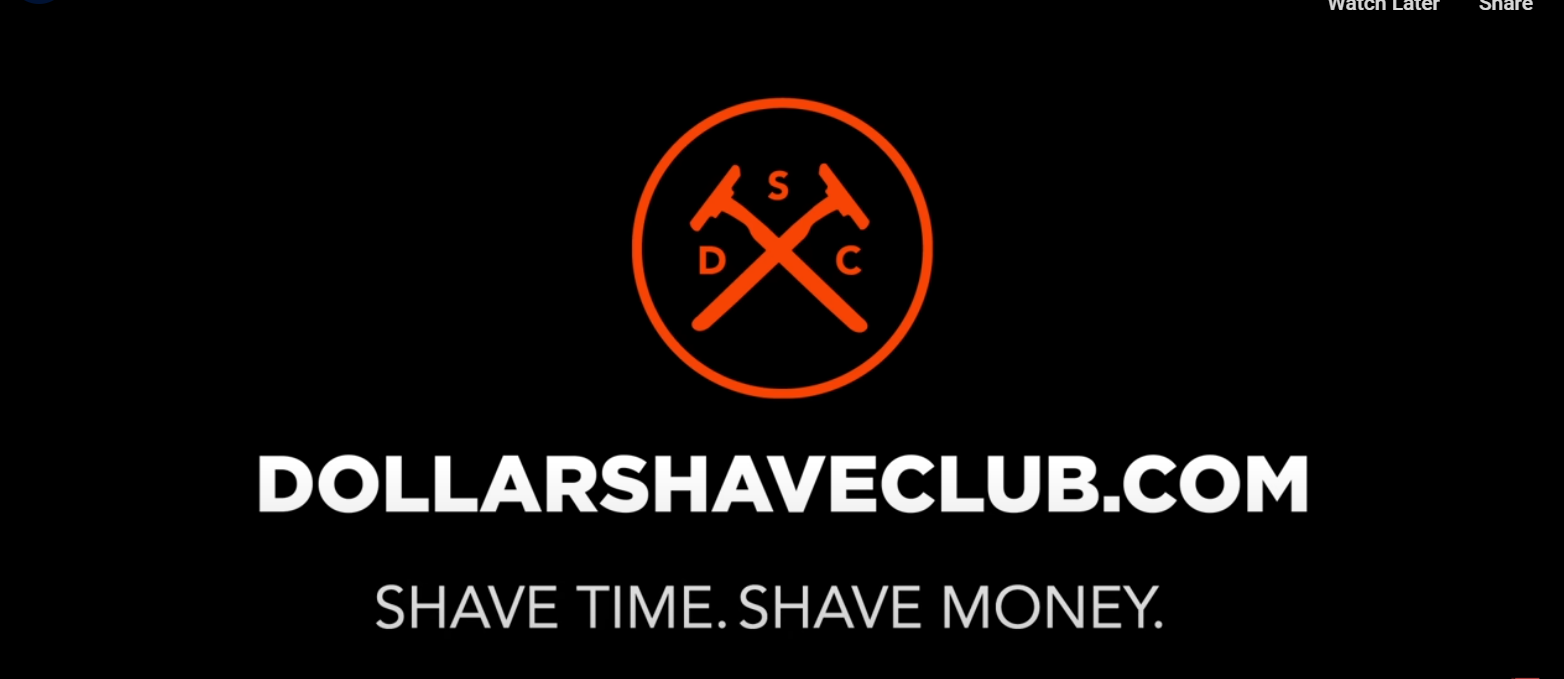
(Source: DollarShaveClub.com – Our Blades Are F***ing Great)
Let’s analyze what the Dollar Shave Club did or did exactly right with the FBM.
Motivation: The video’s humor and authenticity (“Our blades are f***ing great”) tapped into pleasure, while the promise of affordable razors addressed pain (high prices from competitors like Gillette).
Ability: DSC simplified razor buying—$1/month subscriptions, delivered to your door, no store visits required.
Prompt: The video ended with a clear CTA: “Stop forgetting to buy your blades. Join now.” Website pop-ups reinforced this nudge.
Incidentally, also look at the great marketing insight in this. The brand realized that a common pain point was that men simply forget to buy blades, and their campaign offered a solution: doorstep delivery.
Result? DSC gained 12,000 subscribers in 48 hours and was acquired by Unilever for $1 billion in 2016.
Perfect use of FBM, turning a quirky ad into a behavioral juggernaut.
Dropbox Referral Program
Dropbox’s referral program is a masterclass in growth hacking via FBM.
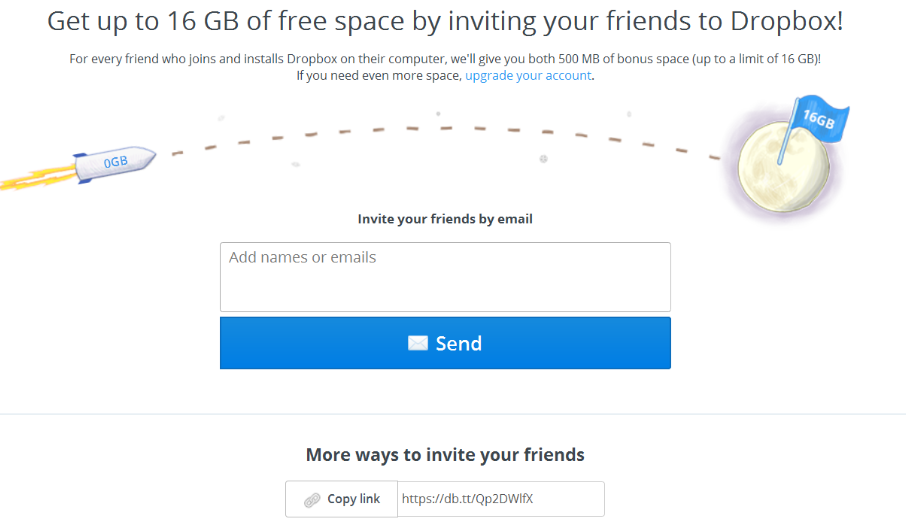
Let’s break down the strategy.
Motivation: Users were offered free storage (pleasure) and the chance to share with friends (acceptance). Who on earth will refuse that much free storage in lieu of a simple action?
Ability: Sharing was simple and effortless, boosting the Ability factor a great deal. All it required was just a click to send an invite via email or social media.
Prompt: Email reminders (“Invite friends, get 500MB free!”) and in-app nudges to keep users interested and engaged.
This strategy boosted Dropbox’s user base from 100,000 to 4 million in 15 months—a 40x increase. By aligning FBM elements, Dropbox turned users into advocates.
Black Friday Campaigns
Another great campaign that nailed FBM to a tee was the Black Friday sales. Retailers like Amazon and Walmart led the charge.
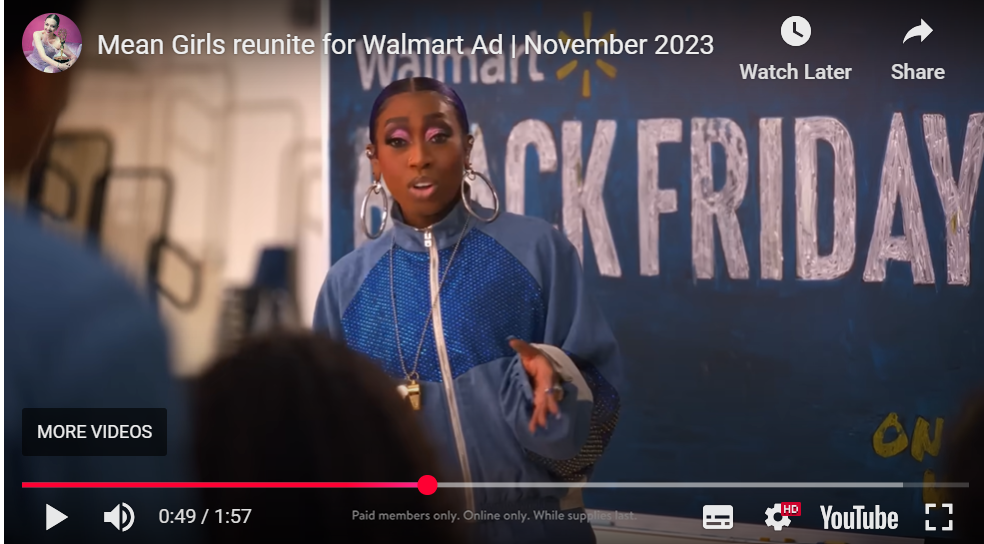
(Source: Mean Girls reunite for Walmart Ad | November 2023)
Now let’s break down the campaign to the main factors.
Motivation: The main motivation here was the Fear of missing out (FOMO) drives urgency— “50% off, today only!”—while steep discounts promise pleasure.
Ability: One-click ordering and mobile-friendly sites remove barriers like time and effort making purchases a breeze.
Prompt: Countdown timers (“Sale ends in 3 hours!”) and push notifications acted as relentless signals.
And what did it achieve?
In 2024, U.S. Black Friday online sales skyrocketed to $10.8 billion, per Adobe Analytics, proving FBM’s power in high-stakes retail moments.
Applying FBM to marketing content creation
Now that you know what proper usage of IBM can do, are you ready to put it to work?
Here’s a step-by-step framework to craft marketing content that always, invariably converts.
Step-by-step framework
1) Identify the target behavior: All marketing campaigns and all strategies start with this.
What do you want your audience to do?
Buy a product? Subscribe to a channel?
Always be direct and simple.
Say “Add to Cart”, “Buy Now,” or “Subscribe Here”.
2) Boost motivation: Pinpoint your audience’s motivators.
What is it that they want?
- Some freebies? A sense of belonging? To get something before it runs out.
Use the motivator catalysts of Fogg.
Like pleasure (“Unlock exclusive perks!”), fear (“Last chance!”), or acceptance (“Join the community!”) based on the motivator triggers in your copy.
3) Simplify the action
Then, it is time to get rid of the roadblocks. Strip away obstacles. Make the copy direct, shorten the path to take action as much as possible, and always give clear instructions.
4) Use effective prompts: Craft compelling and simple calls to action.
Use sparks for low motivation (“Save 20% now!”/ “Use Promo Code for Cashback”), facilitators for low ability (“One-step signup”), or signals when both are high (“Checkout now”).
These four steps are all you need to craft copy around FBM and watch the sales figures shoot through the roof.
Practical examples
All that is fine, but how will it translate to actual campaigns?
Let’s take a simple example of an email campaign for the sale of a cosmetic brand..
Use the sparks in the subject line itself, thereby making it simpler for the user to take action.
Use subject lines like this:
“Don’t Miss Out—50% Off Ends Tonight!” or “ Our Sale Ends in 3 Hours!” (fear)
In the body of the email, tell them precisely how they can claim the discount you promised or take part in the sales instantly by using phrases like “Claim your discount in one click” or “ Click on this link & visit our site now”.
Then it’s time for an effective CTA: “Shop Now” with a timer (prompt).
How will you do this for a landing page?
Start with the motivator. Use headlines like “Join 5,000 Happy Users” (acceptance) or “Here are the 5 Steps to Success” (hope).
Subhead: “Sign up in seconds”. Button: “Start Free Trial” (prompt) (ability).
You are getting the drift. Now, let’s see how we can use it in Meta Ads.
You can use video thumbnails or static posts with lines like “Feel Amazing with Our Product” (pleasure), “Here’s how to get fitter in 5 steps” (reward).
In the caption, boost ability with phrases like “Order in 2 taps” or “Join by simply clicking” and with a prompt in the CTA that can say “Buy Now—Limited Stock” (prompt).
A word of caution, though: No matter how simple it appears to you now, like all marketing campaigns, those built on the FMB also require A/B testing.
You only know things like whether to use hope or fear as a motivator, how to optimize ability, and how to optimize the prompts for a particular audience and brand through rigorous and continuous testing.
It is only with testing that you will find the strongest motivator, tweak CTAs to optimize prompts, and streamline steps to boost ability.
Data will invariably reveal what works.
Conclusion
Fogg’s Behavior Model is not just a framework or theory, it’s a marketer’s secret weapon.
By focusing on Motivation, Ability, and Prompts, you can craft content that doesn’t just inform or entertain but drives action.
The beauty of this gem of a model lies in its simplicity: three elements, one moment, endless possibilities.
Next time you write a blog post, design a landing page, or launch an ad, ask yourself: Are my readers motivated? Can they act easily? Am I prompting them effectively? Test it out in your next campaign—start small, track results, and refine.
Behavior-driven marketing is the future, and FBM puts you ahead of the curve. What will you create with it? Let us know in the comments!
FAQs
What’s the biggest mistake marketers make when using FBM?
The biggest mistake is focusing too much on motivation while ignoring ability and triggers. Even if people want to act, they won’t if the process is complicated or the next step isn’t obvious. Simplify the action and make the trigger clear.
How can I use FBM to increase conversions on my landing page?
Make sure your page builds motivation with persuasive content, reduces friction by making the next step effortless, and includes a strong trigger like a clear, urgent CTA.
Why aren’t my CTAs working despite high engagement?
Your audience might be interested but doesn’t have a clear reason to act. Check if your CTA is placed where people expect it, uses action-driven language, and appears at the right moment in the user journey.
How can I use FBM to write better ad copy?
Start with a strong hook that taps into a pain point or desire. Make the message easy to read and act on. End with a clear trigger, like a time-sensitive offer or a direct CTA.
What’s the best way to apply FBM to email marketing?
Write subject lines that spark curiosity or urgency. Keep the email simple and to the point. Use a single, clear CTA so the reader knows exactly what to do next.
How can FBM help reduce cart abandonment?
Simplify the checkout process, remove unnecessary steps, and use triggers like exit-intent popups, abandoned cart emails, or limited-time offers to push users to complete their purchase.
How does FBM apply to content marketing beyond sales pages?
In blog posts, videos, and social media, use engaging stories to increase motivation, make content scannable and easy to consume, and always include a call to action.
Why do some social media posts go viral while others flop?
Viral content triggers strong emotions are easy to engage with and encourages immediate action like sharing or commenting. If a post flops, it’s often because it’s too complex or lacks a reason for people to interact.
How can FBM improve lead magnet conversions?
Make the benefit of your lead magnet clear, reduce friction by keeping the sign-up process simple, and use a well-placed trigger like an exit popup or a follow-up email.
What’s the role of emotional storytelling in FBM?
Emotion increases motivation by making content personal and memorable. A great story shows a challenge, transformation, and resolution, leading naturally to a call to action.
How do I use FBM for B2B content marketing?
Use case studies and testimonials to build motivation. Keep content structured and easy to understand. Always end with a clear next step, like downloading a guide or booking a call.
Can FBM work for personal branding on LinkedIn?
Yes! Share relatable experiences to build motivation, write in a concise and engaging way to improve ability, and always include a simple call to action, like asking for comments or DMs.
How does FBM relate to user-generated content (UGC)?
People are more motivated to trust and engage with content from real users. Make sharing effortless by creating simple prompts and always remind people to tag or mention your brand.
How do I apply FBM to video marketing?
Hook viewers in the first few seconds, make sure the message is clear and easy to follow, and end with a strong call to action that encourages immediate action.
How do I start implementing FBM in my content strategy today?
Start by auditing your content to see where motivation, ability, or triggers are missing. Simplify the user journey, test different triggers, and measure what works so you can refine your approach.

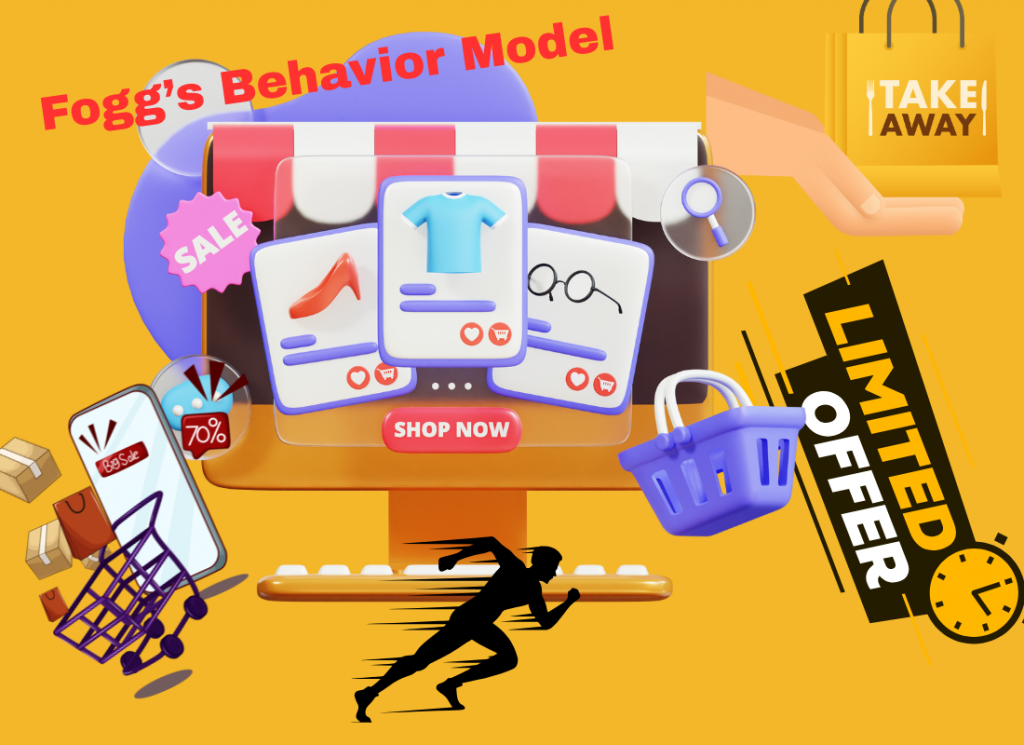


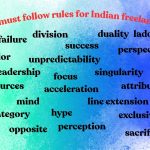


 Allow notifications
Allow notifications